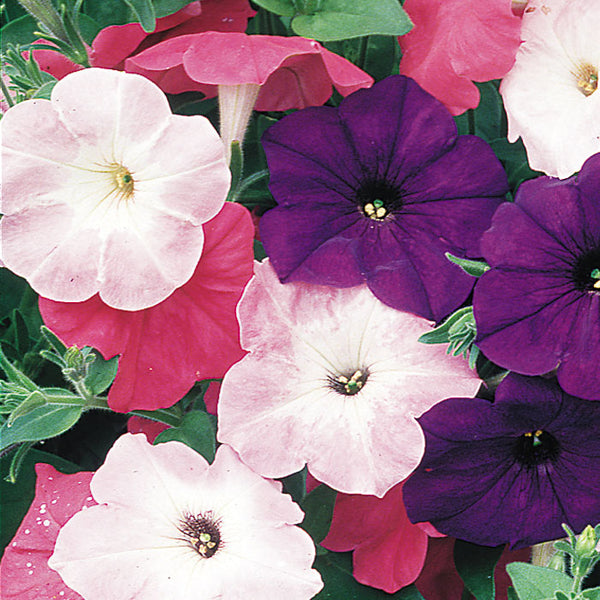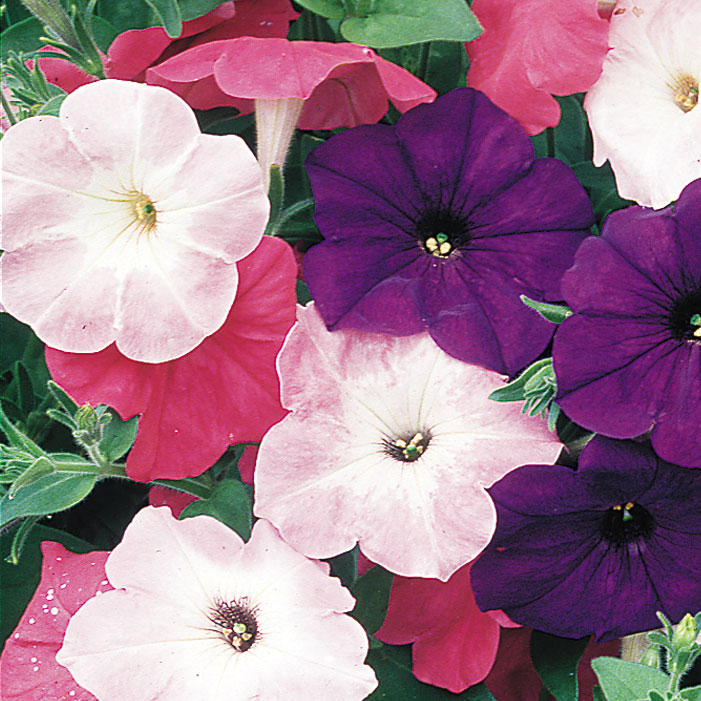SOWING INSTRUCTIONS
Depth:
Surface sow and press in lightly; requires light for germination.
Starting Indoors:
Start indoors 8-10 weeks before last frost. Cover with humidity dome or a light sprinkling of vermiculite to retain moisture until germination occurs. Keep at 65-75°F.
Starting Outdoors:
Direct sow after last springtime frost in zones 8+.
PLACEMENT & CULTIVATION
Petunia is often planted in containers and is an excellent annual groundcover and bedding plant. Pinch back young plants to encourage branching and more flowers and fertilize regularly. At midseason, trim spreading types, especially if growing in containers, to promote lush growth and flowering. The sometimes extreme heat of summer may cause them to go out of bloom. Moving containers into some afternoon shade is beneficial. An excess of water or soggy soils will result in lanky growth and fewer flowers. Deadhead often for flowers all season. Self-sows.
Watering Details:
1" of water a week. Keep evenly moist but never saturated until established, then water during dry spells, more often if growing in a container.
Soil pH:
Acidic to slightly alkaline (6.0-7.5).
Fertilizer:
Fertilize every 3-4 weeks with an organic balanced formulation, or apply a time release fertilizer when planting.
Diseases & Pests:
No major problems. Aphids can be dislodged with a stream of water. Tobacco budworm may appear later in the summer. Handpick at dusk when they come out to feed. If necessary, treat with an organically-friendly insecticide, but not a broad-spectrum, as this will negatively affect beneficial insects that parasitize the pest.
































